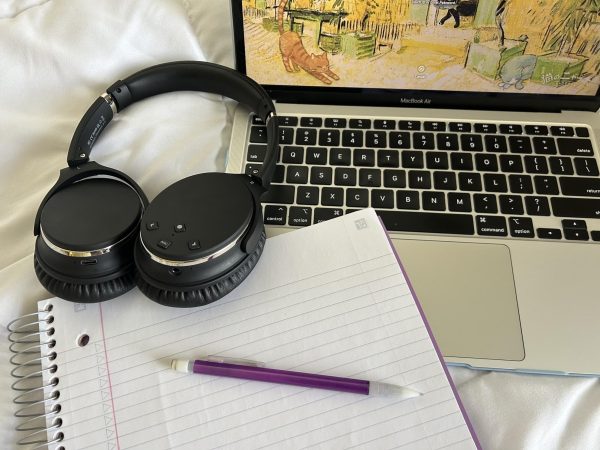reviewed Kent schools face snow day challenge
February 3, 2011
Tuesday’s storm not only brought snow and dangerous layers of ice to the area, but also highlighted state education reforms that Ohio lawmakers passed nearly two and half years ago. In 2009, Governor Ted Strickland and Ohio’s mostly democratic General Assembly passed a bill reducing the number of calamity days—excused school cancelations usually used for snow days—from five days to three days, starting with the 2010-2011 school year. After three missed days of school, districts are required to make up any missed days by the end of the year.
Students in the Kent City Schools missed their third and fourth school day of the year early this week and, as the law stands now, they will have to make up missed time either gradually at the end of school days or their summer break will start at least one day later. The district used their first two calamity days when Kent was blanketed with 22 inches of snow in mid-December; more than half of Ohio’s school districts have used at least three calamity days.
Dr. Joe Giancola, Superintendent of Kent City Schools for the past 18 years, disagrees with the legislation that now in effect. “Governor Strickland had the philosophy that he wanted to see our kinds in school more,” he said Thursday morning in his office on Depeyster Street, but “even if you want students in school more, to go through that five calamity day window to get more days for students, lacked the political foresight of what the complaints were from legislators and parents in northern Ohio.”
Although the law is currently on the books, the five calamity days could be restored by the end of the school year and Kent would not have to make up for lost time. The November elections triggered a drastic change in Ohio’s government when republican John Kasich became governor and republicans gained control of the state legislature.
“Because of the politics in Columbus,” Giancola believes many laws, including the reduction of calamity days, will change. “The new governor, with this party shift, is interested in doing the opposite of what the previous governor wanted. The consideration with students being in school more is not really in the argument anymore. It’s more about the current governor and legislature saying ‘well he wanted three but Ohioans always had five, so we are putting five back in.’”
Legislation to return to five calamity days was introduced to the Ohio House of Representatives on January 19. With the ability of republicans to now fast track legislation, Giancola expects to have his days back: “now that we’ve used four, I would predict that, given our history in Kent, we may need that fifth day.”
Roosevelt High School seniors Cody Seymour and Nick Ellis hope the five days are restored too. Sitting in the cafeteria Thursday afternoon, Seymour said “not a lot of kids are going to want to spend their summer—even a few days extra—here at school even if they get snow days off.” Because Roosevelt has used up it’s snow days earlier this week, Ellis wondered what would happen the next time bad weather hits Kent: “because then we’re always worrying about if there’s going to be a worse day, if we have to save those days.”
Superintendant Giancola insisted that regardless of whether the two additional calamity days are reinstated, it will not change how he determines when school is cancelled. “I can tell you this unequivocally, the process is the same and all I care about is the safety of those students. Make up days are not even on my radar. It’s a reality, but it’s all about what’s the best thing for students.”
CALLING A SNOW DAY
Unlike some school districts that require employees to show up to school for meetings or in-service training, both salaried and hourly employees get the day off just like students. “What’s been negotiated is equal treatment,” said Superintendant Giancola. “Even though they didn’t work and they’re hourly, they’ll still get paid for the day. It’s an old tradition in Ohio law and Ohio public schools. All the teachers and support staff get paid for the day, and that’s just the way it’s always been.”
Superintendant Joe Giancola’s decision to cancel school involves intricate coordination between district staffers, maintenance crews, law enforcement, superintendants from other districts, and weather forecasts, usually all before most people wake up in the morning.
When expecting bad weather, Giancola rises at 4a.m. to check internet and television weather forecasts and simultaneously communicate with Kent City Schools business manager Jim Soyers, who is on the streets with a crew of people clearing the parking lots at any of the eight schools in the district. Giancola and Soyers then get in contact with the Ohio State Highway Patrol and the Kent Police because sometimes law enforcement “knows a little more than what we know” about the conditions of the roads.
“At about 4:30, all the superintendants are calling each other talking about what it’s like out there,” said Giancola about consulting with other school district leaders from Stow, Cuyahoga Falls, Hudson, Tallmadge, and Ravenna.
“By about 5:30, the decision is made,” he said, “once I make the judgment call, Jim Soyers contacts all the major stations—radio and television—and I do a broadcast on our computer system that allows us to call all parents and staff.” The 600 calls it takes to contact everybody takes about 10 minutes.
Wednesday’s weather was particularly bad. “I was on the phone at about five in the morning with Jim Soyers,” Giancola recalled, “and our snow plow guys were saying it has nothing to do with what the plows can do, it has to do with all the ice that is there and the trucks, which are big heavy vehicles, not being able to hold the road. At that time there was an ice-rain coming down and at 5:15 we made the call.”
Roosevelt High School senior Cody Seymour welcomes the early snow day warning because he remembers times where he wasn’t informed until he was already outside waiting for the bus to take him to school. “They’ve been announcing it at like 5:30 in the morning; even before I’m up. They’re really very good at telling us when we have snow days.”
Senior Nick Ellis used the time off for the recent snow days to enjoy himself. “It’s a good refresher,” said Ellis, “It gives us time to relax and have some fun because on the weekends, especially in high school, there’s so much homework and we don’t have much free time.”
While many students check the weather forecasts anxiously hoping for school to be cancelled the next day, Superintendant Giancola gets the most sleep when the weather is nice. “Last night’s evening news pretty much said the winter storm watch was lifted and all the weather maps looked like it was going to be clear,” he mused on Thursday afternoon, “so today I did take the luxury of sleeping in until five.”























